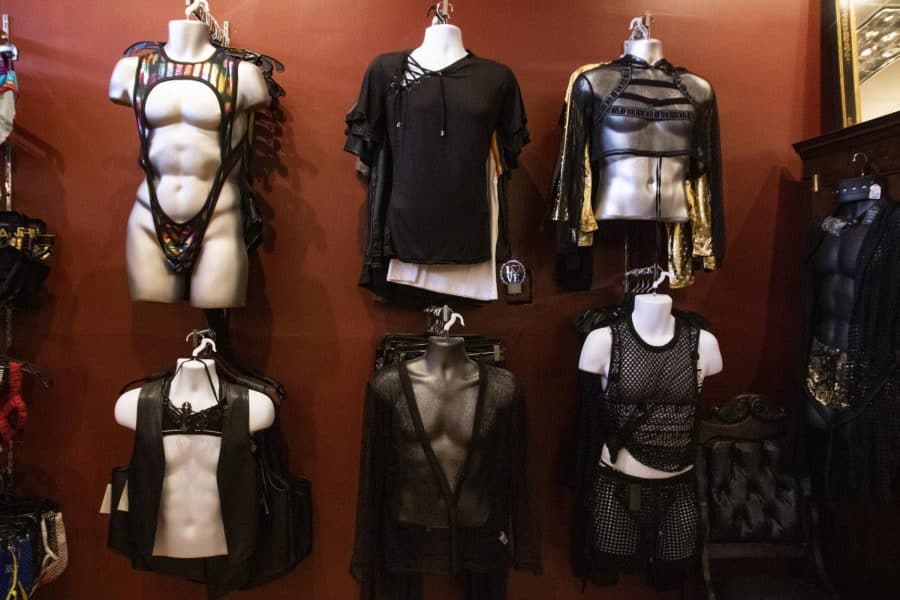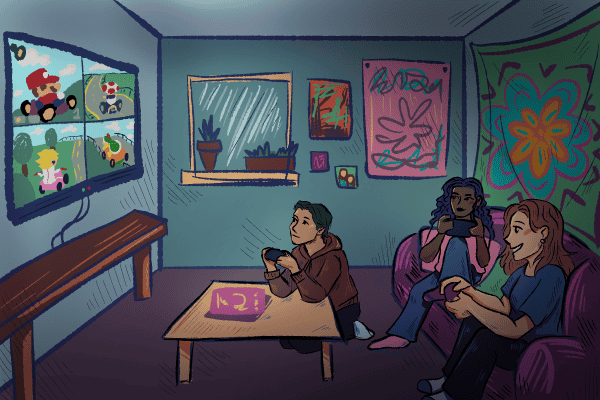Fetishes break boundaries of conventional sex
February 13, 2020
To many, sexual fetishes may seem unorthodox, but experts and sexually mature adults alike recognize that when a fetish is unleashed, a spark is brought back to a relationship and a new level of pleasure is reached.
Presentations of fetishes in popular culture often shock audiences and contribute to a misinformed understanding of fetishes as unusual or shameful.
The E.L. James novel “Fifty Shades of Grey,” for example, explores Christian Grey’s fetish for BDSM, which is an abbreviated term for Bondage and Discipline, Dominance and Submission, Sadism and Masochism. Grey encourages his partner to participate in his fetish and assume a sexually submissive role in the relationship.
While the book series and corresponding films have been highly successful commercially, they have also introduced the concept of sexual violence to audiences without explaining the rules and levels of consent that facilitate safe, healthy BDSM play.
However, fetishes can be safe and healthy, and they are more common than one might think. An erotic retailer’s study in the United Kingdom found that 75% of people surveyed had at least one fetish.
“Human sexual desire manifests in many diverse ways, some of which we come to call fetishes or kinks,” Catherine Roach, a New College professor in the Department of Gender and Cultural Studies, said. “As long as sexuality is practiced in a way that is fully consensual and safe, with mutual pleasure for all partners and with ongoing communication, respect and trust, there’s no need to shame or stigmatize a fetish.”
While a kink is commonly described as a non-conventional sexual practice, a fetish is a specific object or behavior that must be present during a sexual encounter in order for an individual to be fully aroused or stimulated. A fetish can be a body part, item or action that contributes to a sexual fantasy.
Meme Armstrong, who recently opened a fetish boutique in Birmingham called Iniquities, hopes her store will fill a previously existing hole in the market. Armstrong said her clientele is judged or overcharged by other sellers simply because of their unique sexual preferences.
“Basically, the point of me [operating Iniquities] is for the community as a whole, whether that be the fetish community or the gay community, to have a safe place to be exactly who they are and know that no one will judge them,” Armstrong said. “They know they will have somebody knowledgeable who actually cares about them to be able to answer any questions they have and help them through their sexual journey.”
Customers must be at least 18 years old to shop at Iniquities, but according to Armstrong, she has shoppers as young as 18 and as old as 65 or 70. Iniquities patrons include doctors, lawyers, dominatrixes and priests, and the store has a wide range of products for its wide range of customers.
“We have everything from a c–k ring, all the way until, you know, a f—ing machine, a sex swing or a deprivation helmet, which is a mask you put on your face that completely takes away sound and light,” Armstrong said. “So it’s the stuff you see in the movies that people actually use, and it’s sold here. It’s a true lifestyle. It’s not for the faint of heart. It’s for people who do this and do it often.”
Armstrong said talking about sex is so stigmatized that many people are often uncomfortable asking questions or trying new things, but as long as all partners are consenting and no one is being harmed, there is no real right and wrong when it comes to sex.
The scientific community still debates from where fetishes stem. Medical professionals agree that sexual attraction develops around puberty, but one belief is that fetishes originate from mental illnesses or psychological disorders, while an opposing claim is that a fetish can be predicted based on an individual’s personality.
As a young adult, Olivia Moloney, a freshman majoring in criminal justice, finds liberation in testing the boundaries of her sexual preferences.
“I’ve sent feet pics before for money,” Moloney said. “The colorful socks were his favorite.”
Moloney said she has also been asked by a sexual partner to wear a leash and collar.
She personally finds pleasure in erotic asphyxiation, or the act of being choked during sex, and in being restrained during sex using handcuffs or other sadomasochism accessories.
Moloney has also used bdsmtest.org, which provides an online quiz that determines one’s BDSM personality. The test designated Moloney as a submissive brat, which is a playfully disobedient submissive.
While BDSM is more well-known and commonly tested among couples, other fetishes are more obscure. Some individuals have a fetish for urine. Stigmatophilia is a fetish for piercings or tattoos. Voyeurism is a fetish for viewing other people’s sexual encounters, and Knismolagnia is a fetish for tickling.
However, some fetishes are even further beyond many people’s imaginations. Spectrophilia is arousal associated with ghosts, and Psellismophilia is a fetish for stuttering.
According to a study by an official at the Centre of Addiction and Mental Health in Canada, fetishes are more common in men than women. The study suggests men are considered to be more accepting of a partner’s fetishes, but that women may simply disclose fewer fetishes to their partners.
Lindsay Goldwert, author of “Bow Down: Lessons from a Dominatrix On How To Get Everything You Want,” believes that everyone should embrace the opportunity to explore their fetishes as long as they have a support system with a partner or community and engage in the fetish in a safe, consensual way.
“Asking for what you want doesn’t make you a b—-,” Goldwert said. “I don’t want the next generation of women to say they’re sorry for things they’re not sorry for.”
What happens in the bedroom is ultimately between the individuals in the bedroom, and what happens on a sex swing stays on the sex swing.











